MACHUPICCHU INCA CITADEL CIRCUIT 1
A traditional circuit that allows you to visit the upper and lower part of the citadel of Machu Picchu, recommended for older adults, a walk of approximately 2 hours.
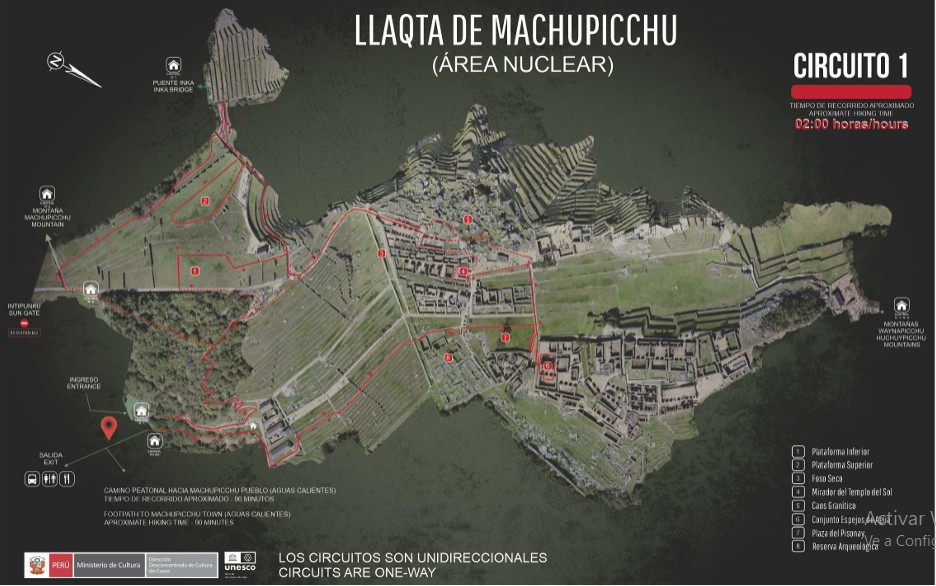
Circuit 1 allows visitors to visit the wonder of the world through a traditional route that leads to observing and walking through buildings and structures such as the dry moat, the viewpoint of the temple of the sun, granite chaos, a set of water mirrors, Pisonay square and the same Archaeological Reserve.
The Machupicchu llaqta is located between the Machu Picchu and Huayna Picchu mountains, the Machu Picchu Historic Sanctuary covers an area of 370 km where around 60 archaeological monuments were identified, these monuments are articulated through a network of roads that are visited by Millions of national and foreign visitors.
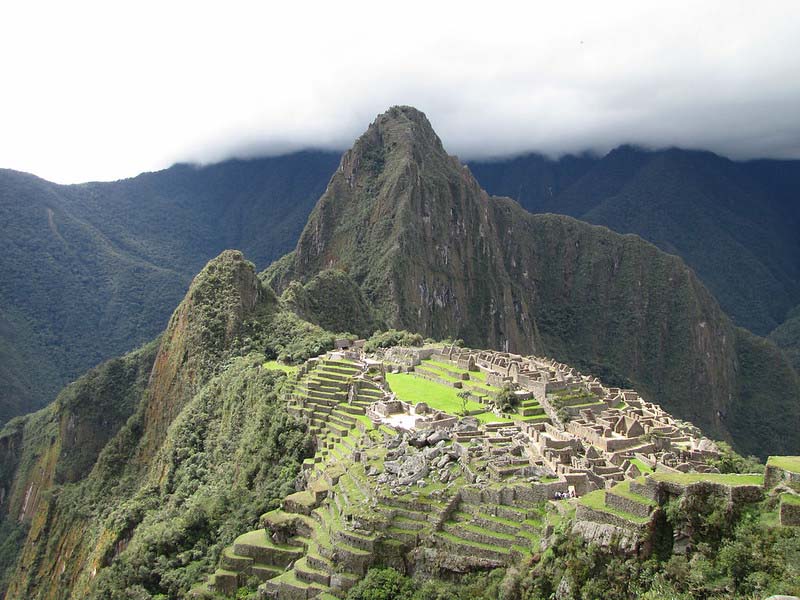
In this first circuit we find the dry ditch, a space that may have served as a water drainage or also used as a delimitation between two sectors, agricultural and the other civil, a geological fault that runs in a northeast-southeast direction, so that, the agricultural sector to the south was formed by a system of crops and the urban sector to the north allowed political, civil and religious activities to take place.
The viewpoint of the Temple of the Sun is located in the upper part of the Temple of the Sun and allows us to observe the enclosure built on a natural cave, due to its high location it is considered a religious construction that served to worship the sun, this Inca building is the only construction in a circular shape, made from granite blocks that has a semicircular wall with two windows, niches and a trapezoidal door with double jamb, this temple served as an astronomical observatory where the arrival of solstices and changes could be exactly determined of station.
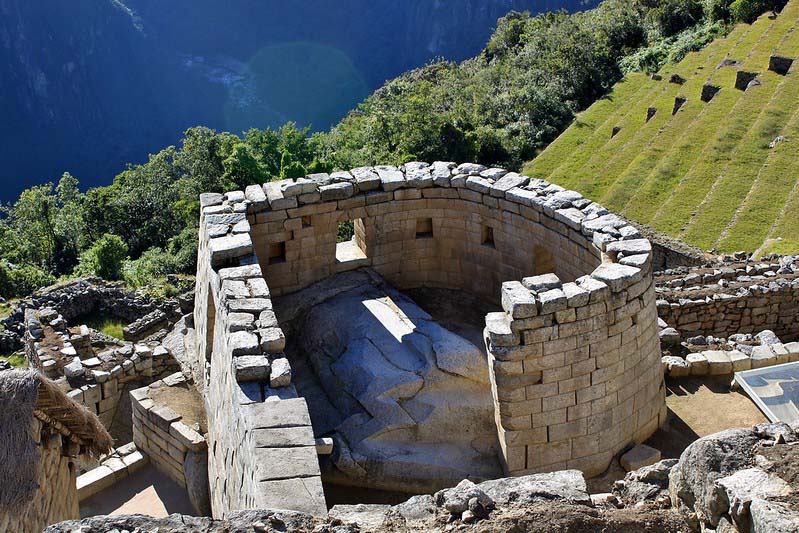
In granitic terrains such as the citadel of Machu Picchu, the landscape with the faults and joints has created particular reliefs with stacks of rock blocks and fractured granites that generate the Granitic Chaos. The construction of the Inca city and the morphology of the land where the rainwater penetrates the faults and fractures help gravity to separate the granite blocks and form the granite chaos, which found by the Incas, they carry out the construction and stabilize platforms, walls and platforms to later build their temples, houses and other buildings.
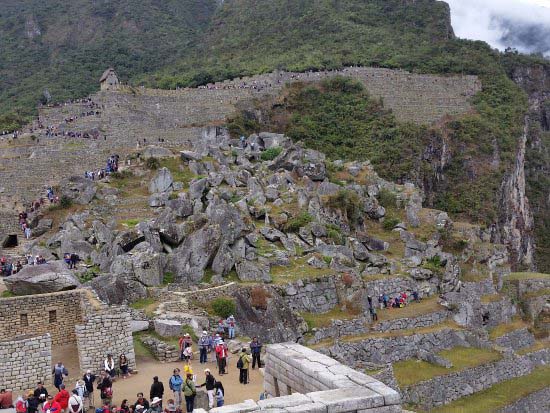
The set of mirrors located in the urban area of the citadel in the lower part of Machu Picchu, a construction similar to two mortars, were carved in an outcrop of granite, have a circular shape carved into the ground, which when filled with water projects the reflection of the sky and where the Inca gods such as the sun, moon and stars rise, used by the Incas as an astronomical observatory.
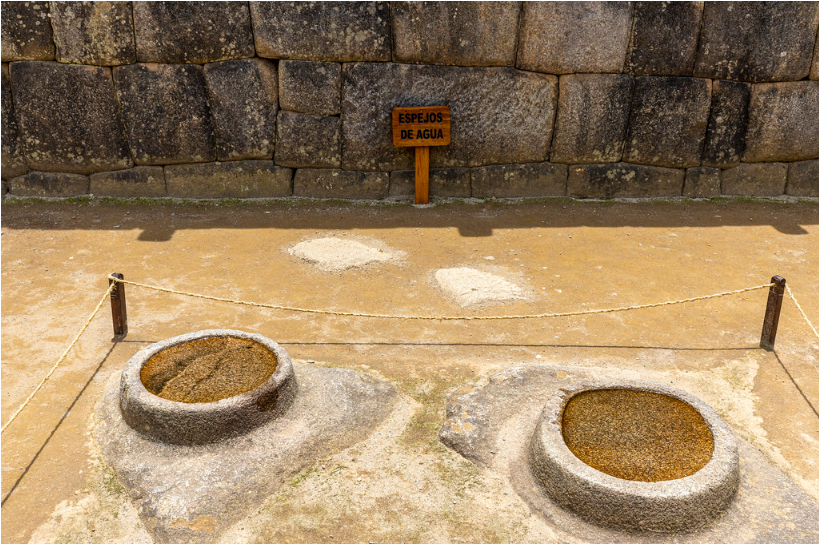
Plaza Pisonay known in the Inca citadel, because the Pisonay is a tree typical of the Andes Mountains, cultivated by the Incas, located in the sacred square of Machu Picchu, it is the emblematic tree that can be found in various destinations in the mountains included in the citadel of Machu Picchu.
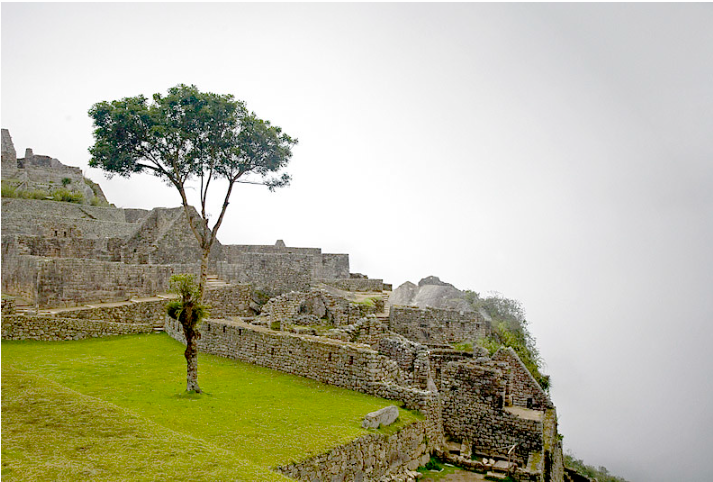
This circuit shows us the wonderful constructions that the Incas built, its journey lasts approximately 2 hours and it is the most requested circuit by the majority of national and foreign visitors. To carry out this tour you must buy the Llaqta de Machupicchu ticket, the only ticket that allows you to choose between the 4 different circuits for the Inca citadel.